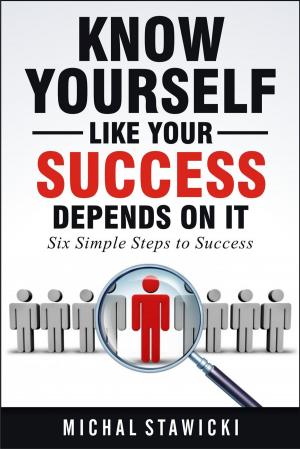Herding Cats Through the Gate to Cyberspace
Business & Finance, Human Resources & Personnel Management| Author: | Claude Whitmyer | ISBN: | 9781458050168 |
| Publisher: | Claude Whitmyer | Publication: | June 1, 2011 |
| Imprint: | Smashwords Edition | Language: | English |
| Author: | Claude Whitmyer |
| ISBN: | 9781458050168 |
| Publisher: | Claude Whitmyer |
| Publication: | June 1, 2011 |
| Imprint: | Smashwords Edition |
| Language: | English |
Virtual collaboration and learning (VCL) technology seems tailor made for large-group interventions. An expanding array of tools appears to hold great potential for organizational change and learning.
To name a few, example tools include:
- Web-based meetings
- Asynchronous discussions
- Data sharing
- Group document editing
- Just-in-time training
- Online surveys
- Keyword searchable document repositories
However, change consultants or organizational development professionals who anticipate a swift, easy introduction of technology may be in for a rude awakening. Without appropriate facilitation, any VCL initiative may flounder along with the intervention it was intended to support.
Table of Contents
--
Executive Summary
Four Types of Cats
- Non-Adopters
- Early Adopters
- Late Adopters
- Middle Adopters
Principles, Applications, Challenges and Proven Solutions
- Principle 1. A successful VCL initiative must have interest and meaning for the group.
- Principle 2. Once a tool is in place, leaders must actively and repeatedly draw attention to its availability, modeling its use and best practices.
- Principle 3. Virtual communications and learning technology must be useful and usable.
- Principle 4. The quality of the VCL experience may be positively influenced when participants are trained in best practices and provided with easy access to answers for frequently asked questions.
- Principle 5. The same design cycle applies to the introduction of virtual learning and communications technology as to any other planning process.
- Principle 6. The introduction of virtual communications and learning technology is a continuing, rather than a one-time, process.
Conclusions and Implications
Resources and Links
About the Authors
Virtual collaboration and learning (VCL) technology seems tailor made for large-group interventions. An expanding array of tools appears to hold great potential for organizational change and learning.
To name a few, example tools include:
- Web-based meetings
- Asynchronous discussions
- Data sharing
- Group document editing
- Just-in-time training
- Online surveys
- Keyword searchable document repositories
However, change consultants or organizational development professionals who anticipate a swift, easy introduction of technology may be in for a rude awakening. Without appropriate facilitation, any VCL initiative may flounder along with the intervention it was intended to support.
Table of Contents
--
Executive Summary
Four Types of Cats
- Non-Adopters
- Early Adopters
- Late Adopters
- Middle Adopters
Principles, Applications, Challenges and Proven Solutions
- Principle 1. A successful VCL initiative must have interest and meaning for the group.
- Principle 2. Once a tool is in place, leaders must actively and repeatedly draw attention to its availability, modeling its use and best practices.
- Principle 3. Virtual communications and learning technology must be useful and usable.
- Principle 4. The quality of the VCL experience may be positively influenced when participants are trained in best practices and provided with easy access to answers for frequently asked questions.
- Principle 5. The same design cycle applies to the introduction of virtual learning and communications technology as to any other planning process.
- Principle 6. The introduction of virtual communications and learning technology is a continuing, rather than a one-time, process.
Conclusions and Implications
Resources and Links
About the Authors















